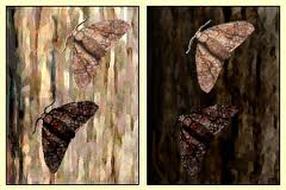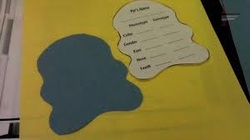
Have you ever wondered why peppered moths have changed colors? Well, in science we just did this "experiment" on how many peppered moths we could spot in a game. We played in "Light Forest" and "Dark Forest". In the light forest it was easier to spot the dark colored peppered moths, but in the dark forest it was about half and half.
Scientists believe that peppered moths have been colored by the pollution due to factories being built. This has darkened many of the peppered moths. Also, it has caused scientists to discover something they never had seen before. When the dark peppered moths went back into the forests, they were more likely to survive in the dark forests because their skin helped them naturally adapt to the lighting. However, in the light forest, they could barely survive. This proved that their skin color helped them adapt better when they blended in.
Scientists believe that peppered moths have been colored by the pollution due to factories being built. This has darkened many of the peppered moths. Also, it has caused scientists to discover something they never had seen before. When the dark peppered moths went back into the forests, they were more likely to survive in the dark forests because their skin helped them naturally adapt to the lighting. However, in the light forest, they could barely survive. This proved that their skin color helped them adapt better when they blended in.

 RSS Feed
RSS Feed